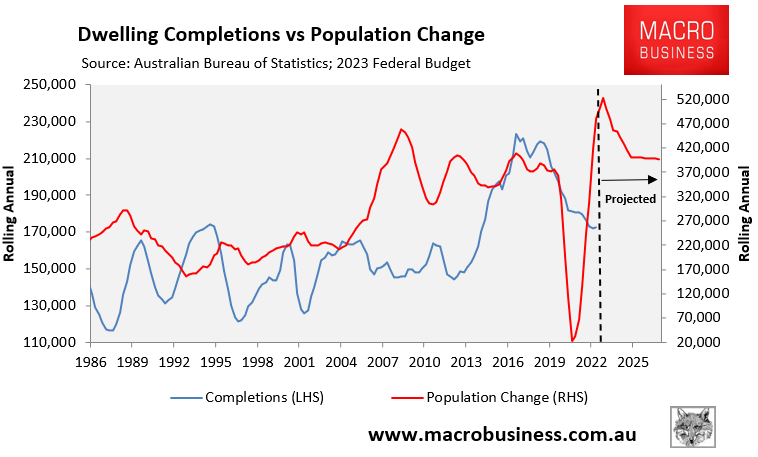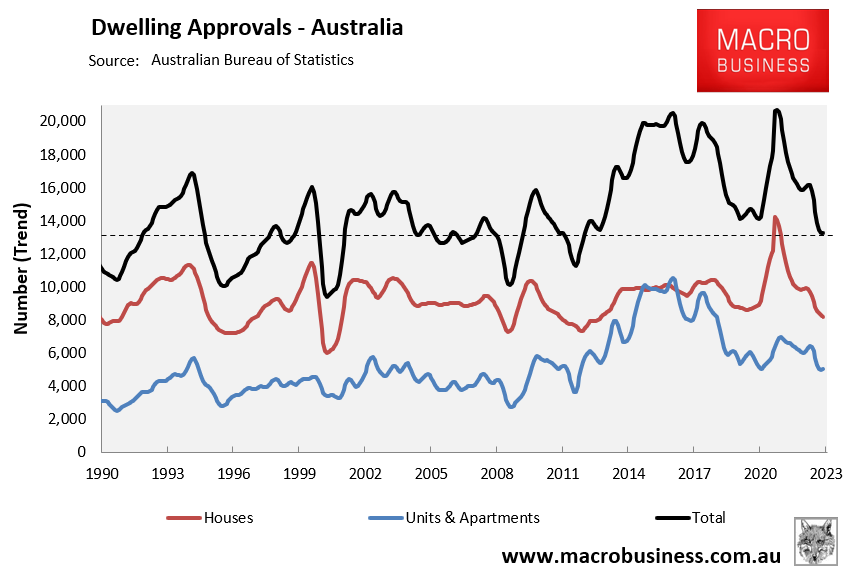The outlook for Australia’s housing construction industry continues to worsen.
The latest federal budget projected that Australia’s population will grow by a record 2.18 million people over the five years to 2026-27, led by a record net overseas migration of 1.5 million people.
This population surge is expected to occur at the same time that the actual number of new dwellings completed in Australia is decreasing, as illustrated below:

Key forward-looking indicators released on Monday by the Australian Bureau of Statistics (ABS) painted a dire picture for the construction industry.
According to the ABS, the number of loans provided for the construction of a new home fell to a historic low in May, falling 74% from the peak in January 2021:

Separately, the ABS showed that trend housing approvals have also fallen to a 11-year low:

Treasury Secretary Steven Kennedy told the recent Senate Estimates Committee that the decline in dwelling approvals will last until 2025, with investment in new residences expected to fall by 2.5% this year, 3.5% in 2023-24, and 1.5% in 2024-25.
The Housing Industry Association (HIA) likewise warned on Monday that the RBA’s aggressive monetary tightening is running roughshod through the construction industry.
“The full impact of the rise in the cash rate still to flow through”, noted HIA Chief Economist, Tim Reardon.
“The RBA’s cash rate increases over the last year have seen owner occupiers and investors, alike, retreat from the market”.
“Earlier projects are also being cancelled as banks withhold finance in the wake of interest rate and construction cost increases”.
“Building approvals are expected to continue to slow until early 2024 given the low volume of sales and lending for new homes recorded this year”.
“This lack of new work entering the pipeline means the number of projects that builders have sold but not yet commenced, is shrinking rapidly, and far fewer new homes will be commencing construction by the end of the year”.
“These shrinking pipelines are occurring at the same time that demand for housing is surging on the back of record high population growth and record low unemployment”, concluded Reardon.
As previously explained, Australia needs to add 329 dwellings to its housing stock every day (net of demolitions) merely to accommodate the 1.5 million net overseas migrants projected to arrive in Australia by 2026-27.
Given the stiff headwinds facing the industry from widespread builder failures, high material costs, and high financing costs, achieving such a high rate of construction will be an impossible task.
As a result, Australia’s housing crisis will intensify, forcing up rents and pushing more people into homelessness.
Running such an extreme immigration program in the midst of an unprecedented housing crisis is policy insanity.

